Yangjiagou Revolutionary Former Site: Experience the Legacy of Chinese Resilience
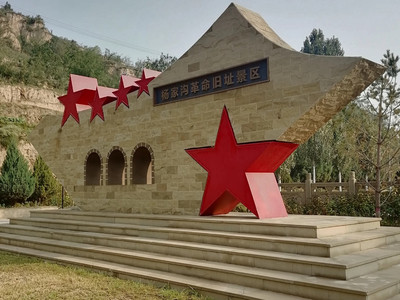
An Essential Guide to Visiting Yangjiagou Revolutionary Former Site
In This Guide
- An Essential Guide to Visiting Yangjiagou Revolutionary Former Site
- The Rich History and Legends of Yangjiagou Revolutionary Former Site
- Main Highlights: What You Absolutely Can’t Miss
- Planning Your Visit: A Practical Guide
- Tickets: Prices, Booking, and Tips
- How to Get There: A Complete Transportation Guide
- Local Cuisine and Accommodation Nearby
- Frequently Asked Questions
- Final Thoughts on Your Trip
Nestled in the historic city of Yan’an, the Yangjiagou Revolutionary Former Site stands as a poignant testament to China’s complex past, particularly during the era of the Chinese Communist Party (CCP). This site was once the heart of revolutionary activities, serving as the headquarters for some of the most significant leaders in modern Chinese history, including Mao Zedong, Zhou Enlai, and Liu Shaoqi. As you step into the world of Yangjiagou, you’ll find yourself walking in the footsteps of history, witnessing the very locations where pivotal decisions were made that would shape the future of an entire nation.
A Rich Tapestry of History
The Yangjiagou site comprises several key areas that encapsulate the spirit of the Chinese Communist Revolution. The Great Auditorium, where the 7th National Congress of the CCP was held in 1945, remains a focal point of interest. Here, Mao Zedong was elected as the chairman of the Central Committee, solidifying his leadership and the ideological framework that would guide the Party for decades.
As you explore the former residences of these illustrious leaders, you’ll be transported back in time to an era defined by struggle and resilience. The Yaodong cave dwellings, which served as homes for the Party leaders, are not just architectural curiosities; they symbolize the harsh realities of life during the revolution, where comfort was a luxury few could afford.
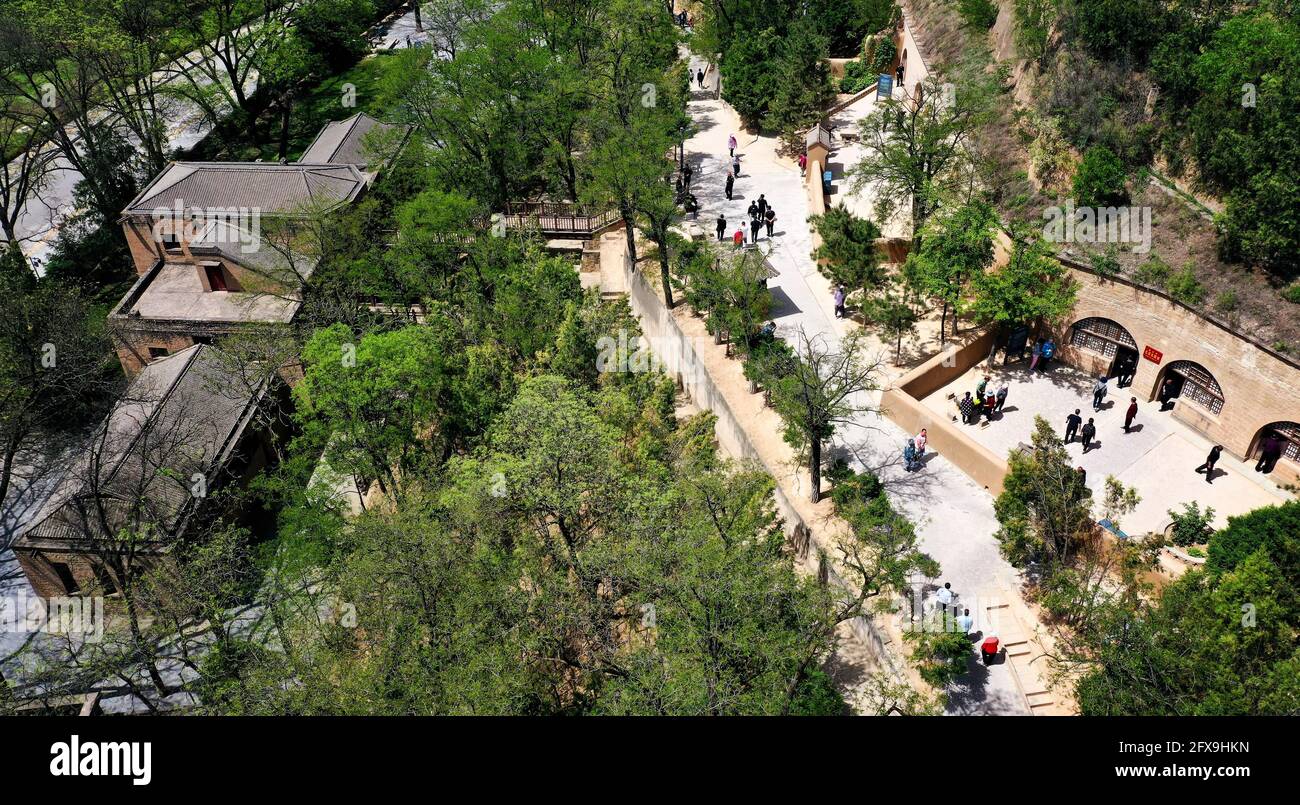
Yangjiagou_Revolutionary_Former_Site.
Practical Information for Visitors
Visiting the Yangjiagou Revolutionary Former Site is not just an opportunity to learn about the past; it’s a chance to engage with a vital chapter of Chinese history in an authentic setting.
- Opening Hours: Daily from 8:00 AM to 5:30 PM (last admission at 5:00 PM).
- Admission: Free entry, making it accessible to all who wish to learn.
- Recommended Visit Duration: Approximately 1 hour is sufficient to appreciate the main features of the site.
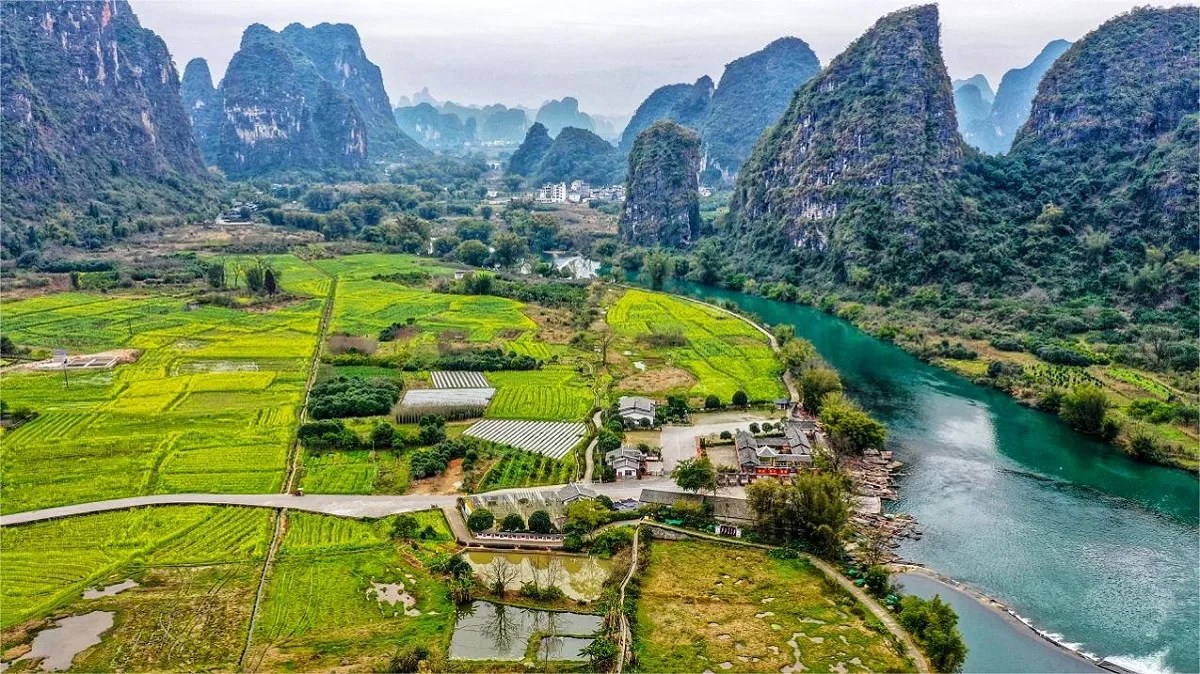
Yangjiagou_Revolutionary_Former_Site.
Getting There
Located approximately 2 kilometers northwest of Yan’an City, accessibility is straightforward. The site can be reached by public bus on lines 1, 3, 7, 8, and 13, or via taxi for a more direct route.
Why Visit?
Beyond its historical significance, the Yangjiagou Revolutionary Former Site offers a unique glimpse into the socio-political dynamics of early 20th-century China. It’s a place where the ideals of the revolution were conceived, debated, and refined. For international travelers, it presents an opportunity to understand not just the events of the past, but also their profound impact on contemporary Chinese society.
As you wander through the remnants of this revolutionary stronghold, you will not only gain insight into the lives of its inhabitants but also reflect on the enduring legacies of leadership, ideology, and sacrifice that continue to resonate in China today.
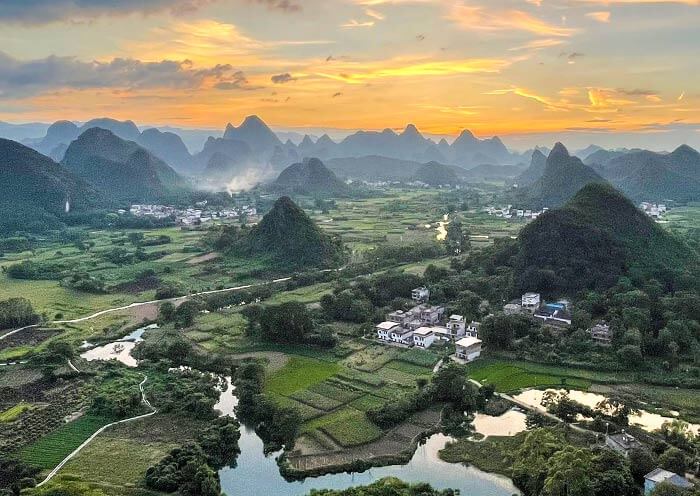
Yangjiagou_Revolutionary_Former_Site.
The Rich History and Legends of Yangjiagou Revolutionary Former Site
Nestled in the rugged landscape of Shaanxi province, the Yangjiagou Revolutionary Former Site stands as a testament to a pivotal era in Chinese history. This site, rich in historical significance, played a central role during the years of the Chinese Communist Revolution and is a must-visit for anyone keen on understanding the cultural and political transformation that shaped modern China.
A Historical Overview
Yangjiagou served as the headquarters of the Central Committee of the Chinese Communist Party (CCP) from November 1938 to March 1947. During this period, it was not just a residence for the leaders but also a bustling center for political activity. The site is most renowned for hosting the 7th National Congress of the CCP from April to June 1945, where Mao Zedong was elected as the Chairman of the Central Committee. This congress was pivotal in solidifying Mao Zedong Thought as the guiding ideology of the Party, marking a significant turning point in Chinese history.

Yangjiagou_Revolutionary_Former_Site.
The site features a variety of structures, including the Great Auditorium, where important decisions and discussions took place, and the Yaodong cave dwellings, which served as living quarters for top leaders such as Mao Zedong, Zhou Enlai, and Liu Shaoqi. These cave homes, carved into the loess hills, are emblematic of the resilience and resourcefulness of the Communist leaders during challenging times, showcasing their commitment to the revolutionary cause despite harsh living conditions.
Legends and Anecdotes
The legacy of Yangjiagou is also interwoven with various legends and anecdotes that illustrate the human side of the revolution. One of the most famous stories is that of Mao Zedong’s meeting with the American journalist Anna Louise Strong in 1946. It was during this meeting, held at a stone table in front of his cave dwelling, that Mao famously articulated his belief that “All reactionaries are paper tigers.” This phrase not only encapsulated his views on imperialism and local opposition but also resonated with many around the world, becoming a rallying cry for revolutionary movements.
Another significant personal story is that of Deng Xiaoping, who later became a prominent figure in China’s economic reforms. Yangjiagou is where he married his third wife, Zhuo Lin, in September 1939, in a ceremony attended by the entire CCP leadership. This moment highlights the intertwining of personal and political lives during a tumultuous period, showcasing the deep bonds formed among the leaders amidst their shared struggles.
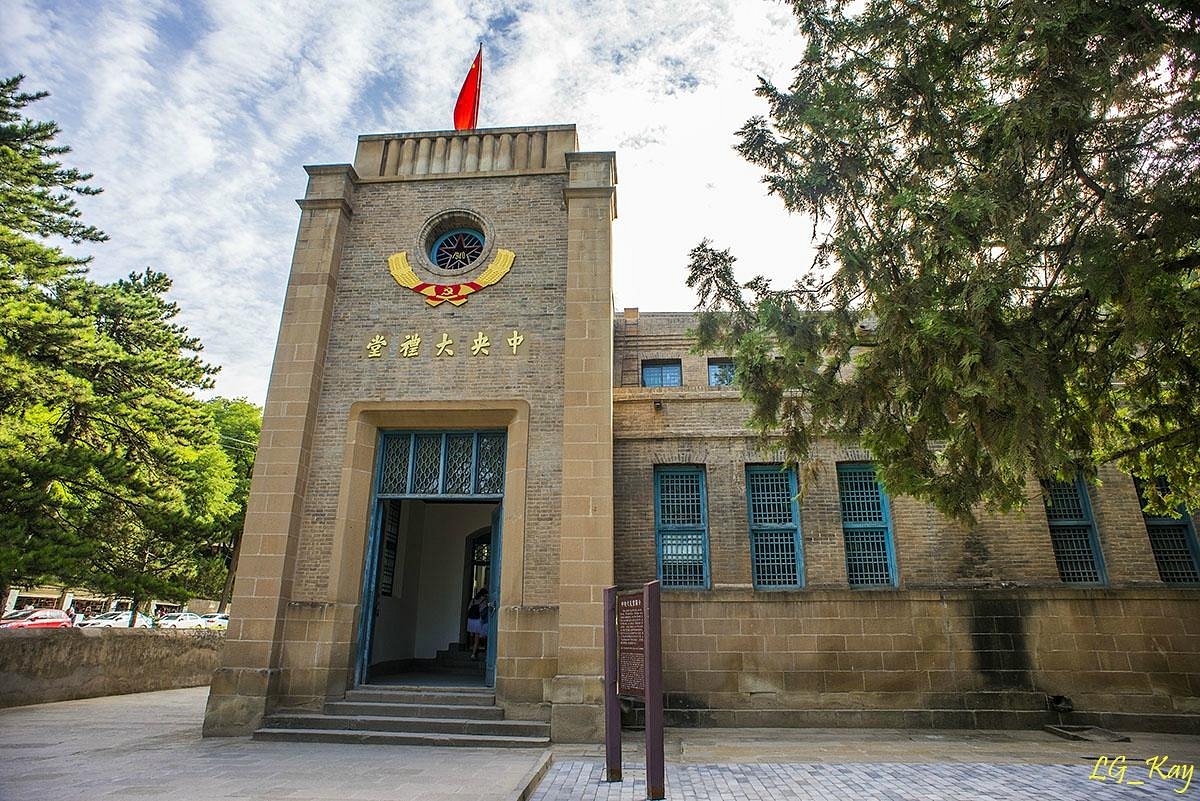
Yangjiagou_Revolutionary_Former_Site.
Cultural Significance
The Yangjiagou Revolutionary Site is not merely a collection of historical buildings; it is a shrine to the spirit of perseverance and sacrifice that characterized the revolutionary leaders. It reflects the broader narrative of the Chinese Communist Revolution, where ideology, culture, and personal sacrifice intertwined to forge a new path for the nation. Today, it serves as a crucial part of Red Tourism, attracting visitors who seek to understand China’s revolutionary past in a deeper context.
Visiting Yangjiagou
For travelers interested in exploring this historical gem, the Yangjiagou Revolutionary Former Site is easily accessible from Yan’an city. The site offers free admission and is open daily from 8:00 AM to 6:00 PM, making it an ideal stop for both history enthusiasts and casual visitors alike. As you walk through the well-preserved structures and witness the artifacts on display, you will find yourself stepping back in time, gaining insight into the lives of the leaders who shaped a nation.
In Conclusion
As you plan your visit to the Yangjiagou Revolutionary Former Site, prepare to engage with stories that transcend time—stories of resilience, ideology, and the human spirit. This site is not just a memorial of the past but a vibrant reminder of the ongoing journey of China, making it an indispensable stop on your exploration of Chinese history and culture.
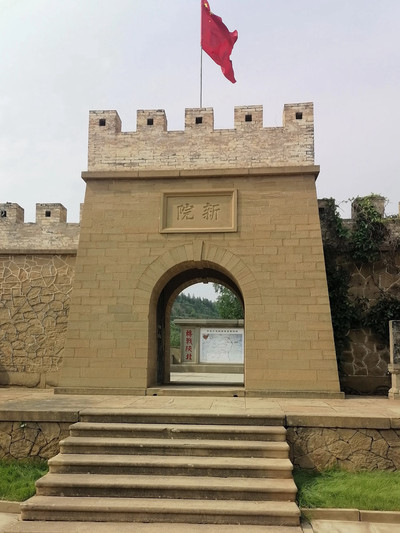
Yangjiagou_Revolutionary_Former_Site.
Main Highlights: What You Absolutely Can’t Miss
Discover the Rich History of Yangjiagou Revolutionary Former Site
For those seeking to delve into China’s revolutionary past, the Yangjiagou Revolutionary Former Site stands as a monumental testament to the era that shaped modern China. Nestled in the Baota District of Yan’an, this site is not just a collection of historical relics but a vivid narrative of the struggles and triumphs of the Chinese Communist Party (CCP) from the 1930s to the 1940s.
Key Highlights You Can’t Miss
1. The Great Auditorium
– Historical Significance: This is where the 7th National Congress of the CCP was held in 1945, marking a pivotal moment in the party’s history. It was during this congress that Mao Zedong Thought was established as the guiding ideology of the party.
– Architectural Features: The auditorium, constructed by party leaders themselves, includes a large hall that has been restored to reflect its original grandeur, complete with period decor reminiscent of the congress.

Yangjiagou_Revolutionary_Former_Site.
2. Former Residences of Key Leaders
– Explore the cave dwellings (Yaodong) that served as living quarters for prominent figures such as Mao Zedong, Zhou Enlai, and Liu Shaoqi. Each cave is preserved to showcase the simplicity and austerity of revolutionary life during this transformative period.
– Mao Zedong’s Cave: Visit the actual space where Mao lived and worked, gaining insight into his daily life and the atmosphere surrounding key political decisions.
3. The Office Building
– This three-story structure was vital for the CCP’s operations, featuring offices and meeting rooms where crucial decisions were made regarding the direction of the party and the country.
– The third floor housed the political bureau, while the first floor included a boardroom and military research hall, offering a glimpse into the inner workings of the CCP.
4. The Stone Table
– This iconic table is where Mao met with American journalist Anna Louise Strong in 1946, leading to his famous assertion that “All the reactionaries are paper tigers.” It symbolizes the interaction between the CCP and international figures during a critical period.

Yangjiagou_Revolutionary_Former_Site.
5. The Cultural Landscape
– The site is set against the rugged backdrop of the Loess Plateau, enhancing its historical ambiance. The surrounding landscape adds a layer of authenticity to your visit, as it was here that the CCP formulated strategies to lead the country through tumultuous times.
6. Educational Exhibits
– Throughout the site, a collection of revolutionary relics and informational panels provide context and depth to the historical narrative. These exhibits are designed to educate visitors about the sacrifices and struggles faced by the early leaders of the CCP.
Practical Information for Your Visit
- Opening Hours: Daily from 8:00 AM to 6:00 PM (last admission at 5:00 PM).
- Admission: Free entry, making it accessible for all who wish to learn about this significant chapter in Chinese history.
- Recommended Duration: Plan to spend at least one hour exploring the site to fully appreciate its historical significance and the stories it holds.

Yangjiagou_Revolutionary_Former_Site.
Getting There
The Yangjiagou Revolutionary Former Site is conveniently located near Yangjialing Road in Yan’an. Public transport options include multiple bus lines, making it straightforward to reach from the city center.
Conclusion
A visit to the Yangjiagou Revolutionary Former Site offers an unparalleled opportunity to immerse yourself in the history of China’s Communist Revolution. With its rich tapestry of events, significant figures, and cultural artifacts, this site is an essential stop for any traveler eager to understand the complexities of China’s past and the enduring impact of its revolutionary leaders.
Planning Your Visit: A Practical Guide
Essential Information for Your Visit to Yangjiagou Revolutionary Former Site
When planning your journey to the Yangjiagou Revolutionary Former Site (杨家沟革命旧址), a key location in understanding China’s revolutionary history, there are several practical aspects to consider. This site offers a unique glimpse into the lives of prominent leaders during a pivotal period in China’s past. Below is a comprehensive guide to ensure your visit is both enjoyable and informative.
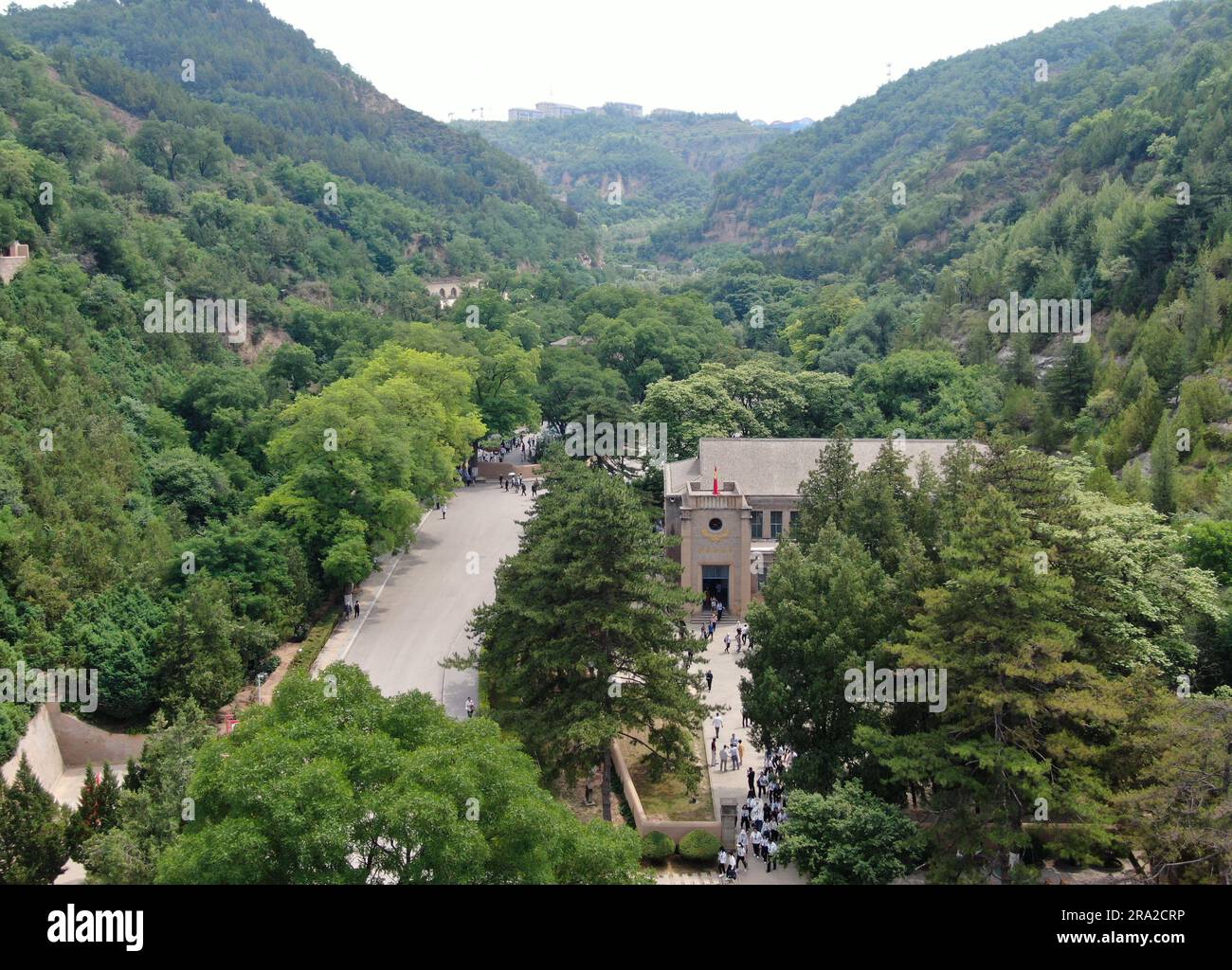
Yangjiagou_Revolutionary_Former_Site.
Location and Accessibility
The Yangjiagou Revolutionary Site is situated near Yangjialing Road in the Baota District of Yan’an City, Shaanxi Province. It is approximately 2 kilometers northwest of the city center, making it easily accessible.
Address:
Yangjialing Revolutionary Site
Yangjialing Road, Baota District, Yan’an City, Shaanxi Province, China
Getting There:
– By Bus: Local bus lines 1, 3, 7, 8, and 13 serve the area, providing convenient access from various points in Yan’an.
– By Air: The nearest airport is Yan’an Nanniwan Airport (ENY), which connects to major cities in China.
– By Train: Yan’an Railway Station is another option for reaching this historic site.

Yangjiagou_Revolutionary_Former_Site.
Opening Hours and Admission
- Opening Hours: Daily from 8:00 AM to 6:00 PM (last admission at 5:00 PM)
- Admission Fees: Free
Visitors can expect to spend about an hour exploring the site, which includes significant historical buildings and the preserved residences of key Communist Party leaders.
What to Expect
The Yangjiagou Revolutionary Site is divided into two main areas: the southern section, which houses the central auditorium, and the northern section, where the former residences of leaders like Mao Zedong, Zhou Enlai, and Liu Shaoqi are located. Here are some highlights to look forward to:
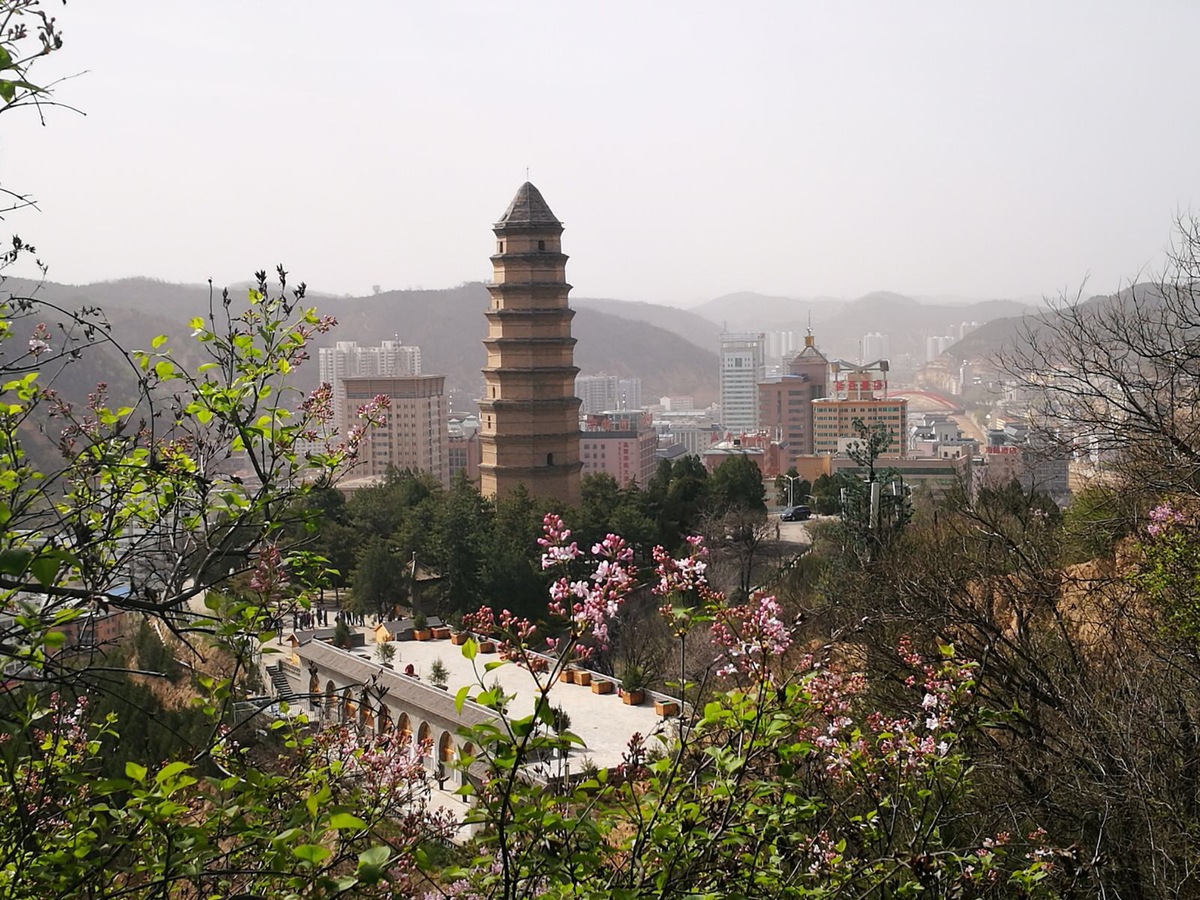
Yangjiagou_Revolutionary_Former_Site.
- Great Auditorium: This historic building was the venue for the 7th National Congress of the Communist Party of China in 1945, where critical ideological decisions were made.
- Former Residences: Explore the cave dwellings known as Yaodong, which served as homes for the leaders. These well-preserved spaces contain relics that tell the story of revolutionary life.
- Scenic Views: The site is nestled in the Loess Plateau, providing stunning views that enhance the experience of stepping back in time.
Nearby Attractions
While visiting the Yangjiagou Revolutionary Site, consider exploring these nearby historical landmarks that further illuminate the revolutionary era:
- Wangjiaping Revolutionary Site
- Zaoyuan Revolutionary Site
- Yan’an Revolutionary Memorial Hall
- Fenghuang Mountain Revolutionary Site
Each offers additional insights into the Communist Party’s history and the socio-political landscape of the time.
Tips for Your Visit
- Wear Comfortable Shoes: The terrain can be uneven, and you will likely be walking quite a bit.
- Bring Water and Snacks: While nearby eateries may offer local fare, it’s always good to have refreshments on hand.
- Respect the Site: As a historical landmark, maintain decorum and respect the significance of the location.
- Plan Your Time: Since the site is free to enter, consider visiting in the morning to avoid crowds and to make the most of your experience.
Conclusion
Visiting the Yangjiagou Revolutionary Former Site offers an enriching experience for those interested in Chinese history and culture. By following this practical guide, you can navigate your visit smoothly, allowing you to engage deeply with the profound historical narratives that shaped modern China. Enjoy your journey into the past!
Tickets: Prices, Booking, and Tips
When planning your visit to the Yangjiagou Revolutionary Former Site (杨家沟革命旧址), it’s essential to know the ticket details and practical tips for a smooth experience. This historical site, steeped in the revolutionary history of China, offers free admission, making it an accessible option for both history enthusiasts and casual visitors.
Ticket Information
- Admission Price: Free
- Opening Hours:
- Daily from 8:00 AM to 6:00 PM
- Last admission is at 5:00 PM
Booking Tips
Although tickets are free, consider the following tips to enhance your visit:
-
Plan Ahead: Arrive early to explore the site fully and avoid the crowds, especially during weekends and holidays when visitor numbers can increase.
-
Guided Tours: While self-exploration is certainly rewarding, consider joining a guided tour if available. This can provide you with deeper insights into the site’s historical significance.
-
Stay Informed: Check local resources or official websites for any temporary closures or special events that might affect your visit.
-
Prepare for Weather: The site is located in the Loess Plateau region, which can be arid and windy. Dress in layers and bring water, especially during the summer months.
-
Transportation: The Yangjiagou site is easily accessible via local bus services (lines 1, 3, 7, 8, and 13), or you can opt for a taxi for a more direct route from central Yan’an.
Nearby Attractions
After your visit to the Yangjiagou Revolutionary Site, consider exploring other historical sites in Yan’an, which collectively tell the story of the Chinese Communist Party’s revolutionary past. Notable nearby sites include:
- Wangjiaping Revolutionary Site
- Zaoyuan Revolutionary Site
- Yan’an Revolutionary Memorial Hall
- Fenghuangshan Revolution Site
With its historical significance and free admission, the Yangjiagou Revolutionary Former Site is a must-visit for anyone interested in the complexities of China’s past. Enjoy your journey through history!
How to Get There: A Complete Transportation Guide
Navigating Your Way to Yangjiagou Revolutionary Former Site
Visiting the Yangjiagou Revolutionary Former Site (杨家沟革命旧址) offers an insightful glimpse into China’s revolutionary past. Located in the historic city of Yan’an, Shaanxi Province, this site is not only a significant cultural landmark but also a testament to the endurance and resilience of the Chinese Communist Party (CCP). Here’s how you can reach this important destination.
Getting to Yan’an
By Air:
– Yan’an Nanniwan Airport (ENY) is the nearest airport, located approximately 20 kilometers from the city center. It serves both domestic and limited international flights.
– Once you arrive, you can take a taxi or arrange for a car service to reach your destination within Yan’an.
By Train:
– Yan’an Railway Station connects the city to various parts of China, including major cities like Xi’an.
– From the railway station, you can easily find taxis or local buses to take you to the Yangjiagou Revolutionary Former Site.
By Bus:
– Long-distance buses frequently depart for Yan’an from various cities across Shaanxi and neighboring provinces. The main bus station is centrally located, making it easy to access local transportation options.
Getting to Yangjiagou Revolutionary Former Site
Once in Yan’an, the Yangjiagou Revolutionary Former Site is conveniently accessible by a variety of local transportation options:
By Bus:
– Take any of the following bus lines that stop near the site: 1, 3, 7, 8, or 13. Buses are affordable and run regularly, making them a convenient option for travelers.
By Taxi:
– Taxis are readily available throughout Yan’an and can be hailed from the street or booked via a ride-hailing app. The fare to the site is reasonable and offers a direct and comfortable journey.
By Bicycle or Walking:
– For the adventurous traveler, consider renting a bicycle to explore Yan’an at your own pace. The site is about 2 kilometers northwest of the city center, making it a pleasant ride or walk for those looking to soak in the local scenery.
Important Information
- Address: Near Yangjialing Road, Baota District, Yan’an City, Shaanxi Province, China
- Opening Hours: The site is open from 8:00 AM to 6:00 PM, with the last admission at 5:00 PM.
- Admission Fee: Entry to the Yangjiagou Revolutionary Former Site is free, making it an accessible experience for all visitors.
Nearby Attractions
While visiting Yangjiagou, consider exploring additional revolutionary sites in Yan’an, such as:
– Zaoyuan Revolutionary Site
– Fenghuang Mountain Revolutionary Site
– Wangjiaping Former Revolutionary Headquarters
– Yan’an Revolutionary Memorial Hall
These sites collectively provide a comprehensive understanding of the revolutionary history that shaped modern China.
With this guide, you are well-equipped to embark on your journey to the Yangjiagou Revolutionary Former Site, a cornerstone of China’s rich historical tapestry. Enjoy your travels through time and culture in this remarkable part of the world!
Local Cuisine and Accommodation Nearby
Exploring the Yangjialing Revolutionary Former Site offers a deep dive into China’s historical landscape, but the experience is not complete without indulging in the local cuisine and finding comfortable accommodations nearby. Here’s a guide to help you savor the flavors of Yan’an and rest well after your explorations.
Local Cuisine
Yan’an is known for its hearty and rustic food, reflective of the region’s agricultural heritage. Here are some must-try dishes and where to find them:
-
Mianpi (面皮): A signature dish of the Shaanxi province, mianpi are cold noodles often served with a savory sauce, garlic, and various toppings. Look for local eateries that specialize in this refreshing dish, especially during the warmer months.
-
Yangrou Paomo (羊肉泡馍): This famous dish features shredded flatbread served in a rich lamb soup. It’s a warming option, perfect after a day of sightseeing. Restaurants like Wang’s Paomo are well-known for their authentic preparation.
-
Steamed Buns (包子): A staple in Chinese cuisine, these fluffy buns are often filled with meat or vegetables. Grab a few from local street vendors for a quick snack.
-
Shao Kao (烧烤): Street barbecues are popular in Yan’an, where you can find skewers of meat, vegetables, and even tofu grilled to perfection. The night markets, especially around the city center, offer a vibrant atmosphere to enjoy this casual dining experience.
-
Local Snacks: Don’t miss out on diverse local snacks such as sour plum and spicy peanuts. Many small shops and street vendors sell these tasty bites, ideal for munching on while exploring.
Accommodation Nearby
After a day filled with exploration, a cozy place to rest is essential. Here are some excellent accommodation options near the Yangjialing Revolutionary Site:
-
Yan’an Grand Hotel (延安宾馆): This hotel offers comfortable rooms with modern amenities. Located conveniently close to the revolutionary sites, it’s an excellent choice for those wanting to immerse themselves in history while enjoying a bit of luxury.
-
Hanting Hotel Yan’an (汉庭酒店): A budget-friendly option, this hotel provides clean and simple accommodations. Its location near the city center makes it easy to access local attractions and dining options.
-
Red Army Hotel (红军饭店): Emphasizing its revolutionary history, this hotel is themed around the Red Army and offers a unique stay for history enthusiasts. The rooms are basic but comfortable, making it ideal for those focused on exploring the area.
-
Airbnb Options: For a more personalized experience, consider browsing Airbnb listings for local homes or apartments. This can provide a unique insight into daily life in Yan’an, often with the added benefit of interacting with local hosts.
Conclusion
Your visit to the Yangjialing Revolutionary Former Site is sure to be enriched by the local flavors and comfortable stays in Yan’an. Enjoy the robust cuisine that tells the story of this historic region, and choose accommodations that cater to your comfort and budget. Whether you are indulging in traditional dishes or resting in welcoming lodgings, Yan’an promises a memorable experience steeped in history and culture.
Frequently Asked Questions
Frequently Asked Questions About the Yangjiagou Revolutionary Former Site
1. What is the Yangjiagou Revolutionary Former Site?
The Yangjiagou Revolutionary Former Site, also known as the Yangjialing Revolutionary Site, is a historic location in Yan’an, Shaanxi Province, China. It served as the headquarters for the Central Committee of the Chinese Communist Party (CCP) from 1938 to 1947. This site is significant for its role in the Chinese Communist Revolution and is where many key leaders, including Mao Zedong, lived and worked.
2. How do I get to the Yangjiagou Revolutionary Site?
The site is located near Yangjialing Road in Baota District, approximately 2 kilometers northwest of Yan’an City. Visitors can reach the site via local bus lines 1, 3, 7, 8, and 13. The address is Yangjialing Revolutionary Site, Yangjialing Village, Yan’an, Shaanxi Province, China.
3. What are the opening hours and admission fees?
The Yangjiagou Revolutionary Site is open daily from 8:00 AM to 6:00 PM, with the last admission at 5:00 PM. Admission is free, making it accessible for all visitors.
4. What can I see at the site?
Visitors to the Yangjiagou Revolutionary Site can explore various historical buildings, including the Great Auditorium, where the 7th National Congress of the CCP was held. You can also see the well-preserved cave dwellings (Yaodong) that served as residences for key leaders like Mao Zedong and Zhou Enlai, as well as the office building where significant decisions were made.
5. How long should I plan to spend at the site?
It is recommended to allocate about one hour to explore the Yangjiagou Revolutionary Site. This should provide sufficient time to take in the key attractions and appreciate the historical significance of the area.
6. Are there any other attractions nearby?
Yes, the Yangjiagou Revolutionary Site is part of a larger network of revolutionary sites in Yan’an. Nearby attractions include the Wangjiaping Revolutionary Site, Yan’an Revolutionary Memorial Hall, and the Fenghuang Mountain Revolutionary Site, all of which enhance the historical experience of the region.
7. Is there any public transportation available from the city center?
Yes, public transportation is available from Yan’an City Center. Local buses frequently run to the Yangjiagou Revolutionary Site, making it easy for visitors to reach the site without needing a car.
8. Can I take guided tours at the site?
While the site is self-guided, you may find local guides offering tours of the area. These guides can provide in-depth insights into the historical context and significance of the Yangjiagou Revolutionary Site, enhancing your visit with their expertise.
Final Thoughts on Your Trip
As you prepare to leave the Yangjiagou Revolutionary Former Site, take a moment to reflect on the profound historical significance that resonates within these grounds. This isn’t just a collection of relics from China’s past; it is a living testament to a pivotal chapter in the nation’s journey.
Exploring Yangjialing offers more than a glimpse into the life of leaders like Mao Zedong and Zhou Enlai; it invites you to understand the resilience and determination that shaped modern China. The site, where revolutionary ideas flourished amidst hardships, serves as a powerful reminder of the interplay between history and culture.
Key Takeaways from Your Visit:
- Rich Historical Context: Gain insights into the ideological foundations of the Chinese Communist Party and the significance of the 7th National Congress held here.
- Preserved Heritage: Walk through the well-maintained cave dwellings and the Great Auditorium, visualizing the leaders’ daily lives and the decisions that altered the course of history.
- Engagement with Local Culture: Embrace the spirit of Red Tourism and appreciate how Yan’an has become a hub for those seeking to explore revolutionary history.
Final Thoughts
Whether you are a history enthusiast or a curious traveler, the Yangjiagou Revolutionary Former Site offers an unforgettable experience that transcends mere sightseeing. It’s an opportunity to connect with a crucial era that continues to influence China today. As you leave, carry with you the stories of perseverance, camaraderie, and vision that echo through these historic walls. Your journey through Yangjialing is not just an exploration of the past; it is an invitation to reflect on the resilience of the human spirit in the face of adversity. Safe travels on your next adventure!